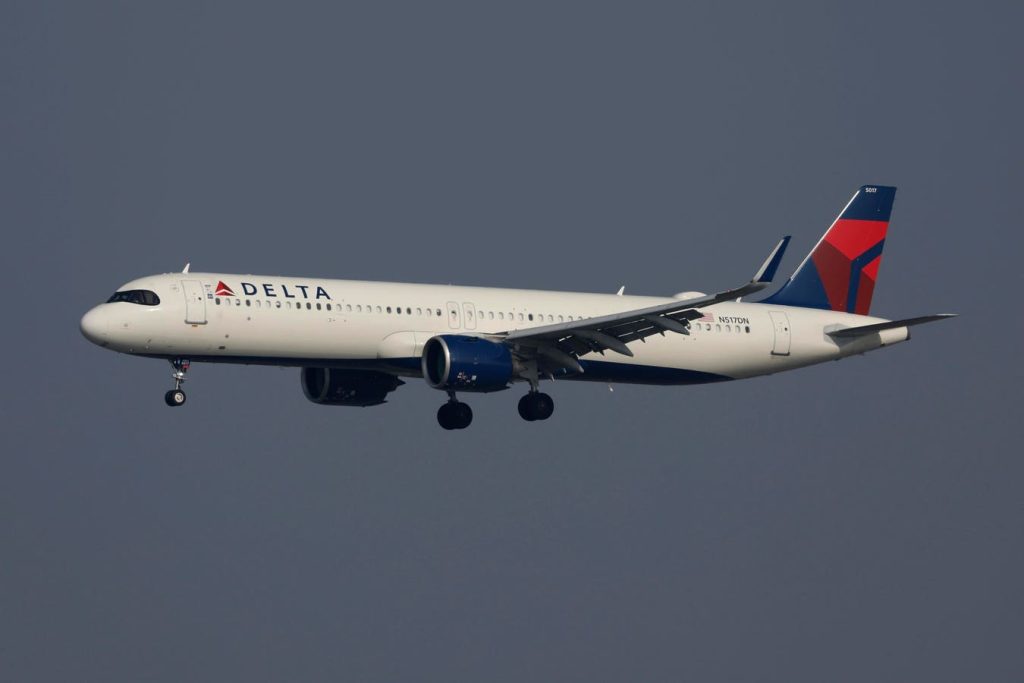Delta Air Lines (DAL) concluded 2024 on a high note, exceeding market expectations with its fourth-quarter earnings report. The airline posted adjusted revenue of $14.4 billion and adjusted earnings per share (EPS) of $1.85, surpassing the anticipated $14.2 billion in revenue and $1.76 EPS. This positive performance propelled DAL stock to a 9% surge following the announcement. However, for investors seeking a more stable and less volatile investment strategy, diversified portfolios like the Trefis High-Quality Portfolio, which has consistently outperformed the S&P 500, offer a compelling alternative. This portfolio’s focus on high-quality stocks has yielded impressive returns exceeding 91% since its inception, demonstrating the potential benefits of a diversified approach.
A closer look at Delta’s Q4 performance reveals robust growth across several key metrics. Adjusted revenue increased by 6% year-over-year, while reported revenue surged by 9% to $15.6 billion. This growth was primarily fueled by a remarkable 30% increase in Cargo and Other business revenue, complemented by a 5% rise in Passenger revenue. While passenger revenue per available seat mile remained flat, Delta’s capacity also expanded by 5%. Notably, the company’s adjusted operating margin widened to 12% from 9.7% in the same quarter of the previous year, largely due to an 18% year-over-year decrease in fuel expenses, which totaled $2.4 billion. This cost reduction significantly contributed to the improved bottom line, with adjusted EPS reaching $1.85 compared to $1.28 in Q4 2023.
Looking ahead, Delta projects a positive trajectory for 2025, anticipating over 10% year-over-year earnings growth. For Q1 2025, the airline forecasts revenue growth between 7% and 9%, with adjusted EPS ranging from $0.70 to $1.00. While the recent Q4 results spurred positive market sentiment towards DAL stock, the company’s historical performance has been characterized by volatility. Over the past four years, DAL’s annual returns have fluctuated significantly, ranging from a -16% decline in 2022 to a substantial 52% increase in 2024. This volatility contrasts sharply with the steadier performance of diversified portfolios like the Trefis High-Quality Portfolio, which consistently outperformed the S&P 500 during the same period. This underscores the potential advantages of a diversified investment approach in mitigating risk and achieving consistent returns.
The superior performance of the Trefis High-Quality Portfolio, comprising 30 carefully selected stocks, can be attributed to its focus on minimizing risk while maximizing returns. By diversifying across a range of high-quality companies, the portfolio mitigates the impact of individual stock volatility and provides a smoother investment journey. This approach contrasts with the often unpredictable fluctuations of individual stocks like DAL, which can be influenced by a variety of factors ranging from macroeconomic conditions to industry-specific challenges. The portfolio’s consistent outperformance of the S&P 500 over the past four years highlights the effectiveness of its risk-adjusted investment strategy.
Considering the prevailing economic uncertainty surrounding potential interest rate cuts and geopolitical tensions, there is a possibility that DAL could experience performance fluctuations similar to those seen in 2021 and 2023, potentially underperforming the S&P 500 over the next 12 months. However, Delta’s current valuation suggests potential for further growth. Based on a price-to-earnings (P/E) multiple of 10x and projected adjusted EPS of $7.54 for 2025, DAL’s estimated valuation reaches $77 per share, implying a potential upside of over 15% from its current price of around $65. This valuation analysis indicates that DAL stock may be undervalued and presents an attractive investment opportunity.
While DAL’s growth prospects appear promising, it is crucial for investors to consider the broader competitive landscape and evaluate Delta’s performance relative to its industry peers. Benchmarking DAL against other airlines based on key metrics can provide valuable insights into the company’s relative strengths and weaknesses, facilitating informed investment decisions. Resources like Peer Comparisons offer valuable data and comparative analyses, enabling investors to gain a comprehensive understanding of the airline industry and identify potential investment opportunities. By considering both DAL’s individual performance and its standing within the industry, investors can make more informed decisions about their portfolio allocation and investment strategies.

